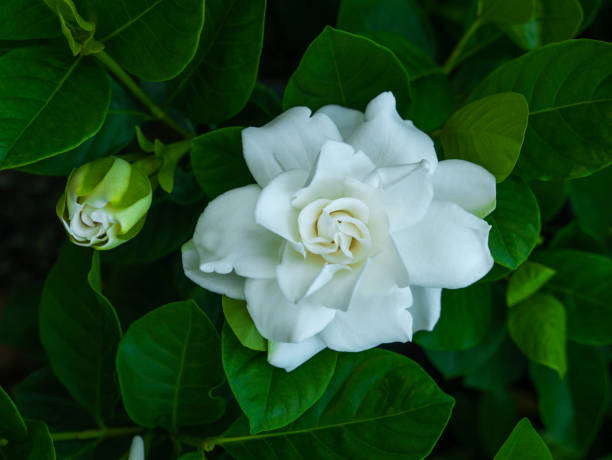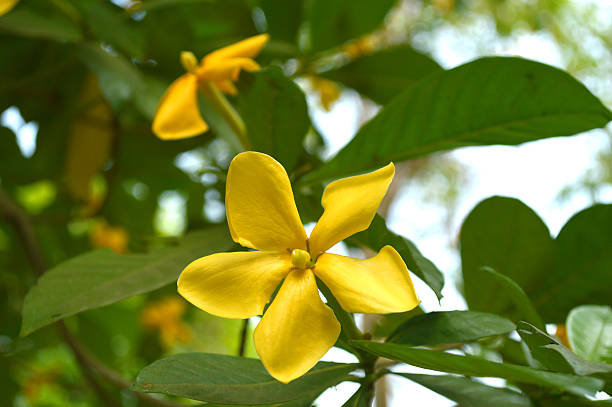What Are the Colors of Gardenia Flower?
The most common color of Gardenia varieties is a shade of white (creamy-white). Another known variety is the color yellow (golden yellow). Other sources do not claim that there are Gardenias with color shades of red, pink, and even red. However, it’s not confirmed yet if the claim is valid.
Table of Contents
Gardenia Flower Color and Its Meaning
The color of a flower can significantly enhance its symbolic meaning, but it also has the power to alter that meaning completely. While some flowers have many colors, others only have one or two. It does not diminish the significance of their symbolism.

White
Because of its white color, this lovely flower perfectly represents innocence, purity, and clarity, and it is often used to symbolize these qualities. Weddings are frequently held with this flower in attendance, and many people consider it to be one of the most beautiful flowers on the planet. The delicate nature of this beautiful flower pairs beautifully with the color white. The color and the symbolism behind the flower make it an excellent choice for wedding bouquets and decorations.
Botanical Facts and Characteristics of the Gardenia Flower
Gardenia jasminoides, commonly known as the Grimian gardenia, is not difficult to grow, but it does require a great deal of attention to ensure that it blooms. The Garden grows to about 450 mm in height in a greenhouse or as a potted plant in the Garden. They prefer a moderately high humidity level and plenty of light, though not direct sunlight.
The temperature range of 16 ° C to 24 ° C is suitable for most of the year. However, it is necessary to maintain a constant temperature of 17 degrees Celsius in the late spring and summer, when the first flower buds begin to form. Withering will occur if the temperature changes abruptly.
All year long, watering is required to keep the plants healthy. In the summer, add just enough water (at room temperature) to moisten the soil mixture in the bowl, and before pouring again, leave a 15-mm-thick layer of soil that is dry on top of the soil mixture. Plants should be watered regularly with water that is room temperature. It is important not to wet the buds or flowers because this may cause them to change color or become damaged.
Give the plants a good drink every two to three weeks between March and September and feed them with an acidic fertilizer designed for pots. Gardenia does not tolerate acid, so avoid using tap water if you live in an area where the water is hard. Allow the top layer of soil, with a thickness of 25–50 mm, to dry between waterings during the winter.
When roots begin to emerge from the soil’s surface or through a drain hole in the vessel, move the bushy plant to a soil mixture containing the exact proportions of leaf and moss as the original soil. Combinations of forest soil and clay soil that do not contain lime are also suitable. Gardenias can be encouraged to flower by trimming them, and you can also promote flowering in winter by pulling out summer buds.

Gardenia in Different Occasions
Understanding their significance is critical when it comes to knowing when to give flowers as gifts. Keep in mind the importance of the gardenia. Give these flowers when you have a special affection for another person, and they are unaware of it, especially if you want to spread joy to others. They are also appropriate gifts for commemorating a communion or baptism. As previously stated, these flowers represent purity and are suitable for a special children’s celebration of any kind.
Although they are appropriate flowers to give your fiancée or girlfriend, they are also suitable because they represent the purity of a relationship or love, among other things.
Gardenias are frequently used in wedding ceremonies because of their beauty and symbolic significance. They also serve to convey happiness and purity on the most important day of a couple’s lives.
Gardenias can be found in the bridal bouquet, church, and reception: as centerpieces or to decorate the space, all of which are common at weddings. These gardenias are typically white and used as wedding centerpieces.
